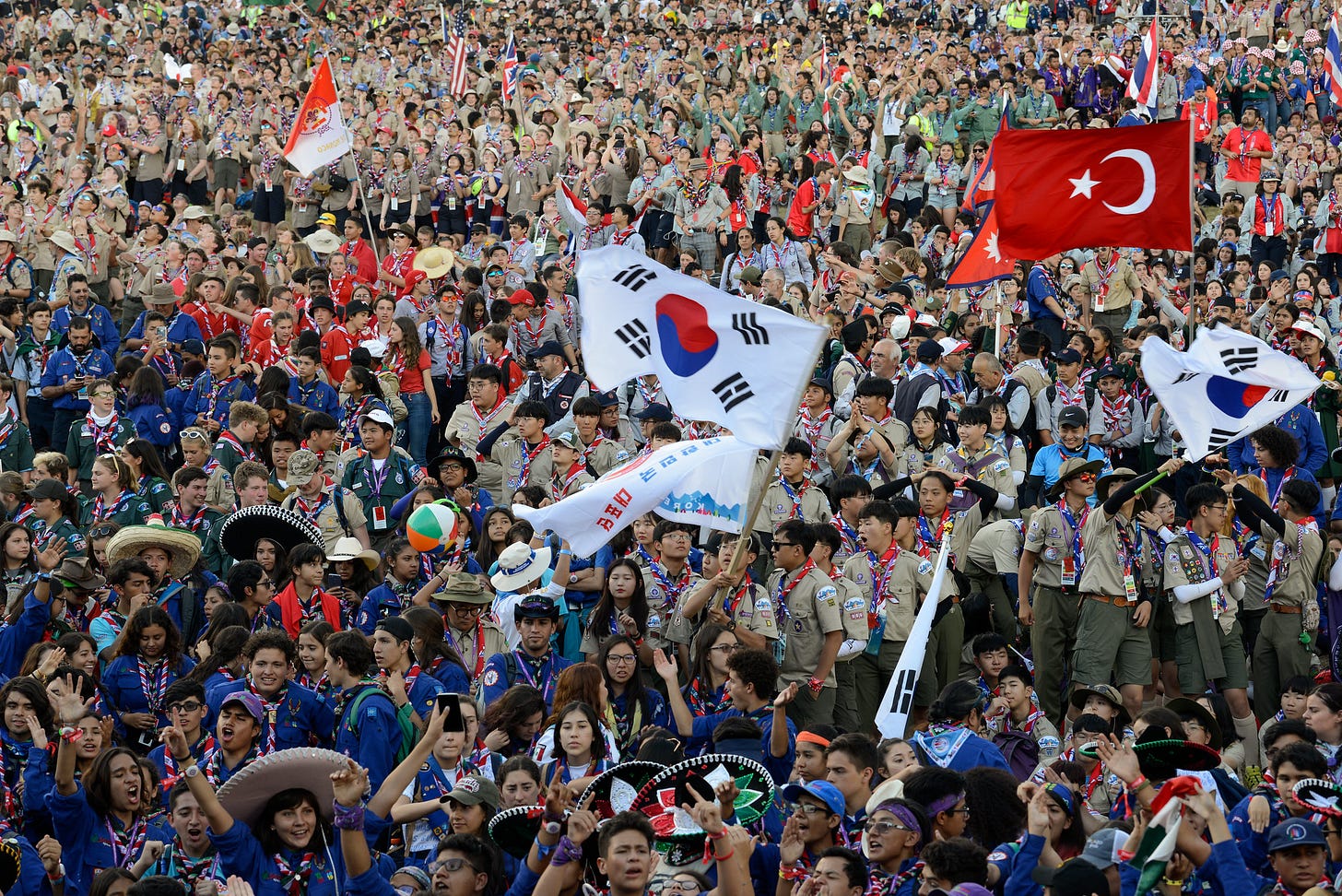What we can learn from international Scouting movements
Scouting orgs across the world have been accepting and affirming LGBTQ members for decades. Here are some of the policies and programs that stand out.
I remember my shock when I learned that scouts in the Netherlands are encouraged to organize “gay movie nights.”
It was a few years ago when I was conducting research on 12 scouting organizations around the world that are fully inclusive of LGBTQ members. As I combed through materials from Scouting Nederland, I was floored by the sheer volume of programming the organization had developed — ranging from serious to silly — that allow youth to address and learn about sexual and gender identity in a safe, supervised way. Most shocking among them: Gay movie nights.
Maybe this was so surprising to me because it felt so discordant with my experience of American Scouting. When I was a youth in the program, gender and sexuality were never talked about — at least not in a positive way — and even today as LGBTQ members are no longer banned, they are hardly embraced or celebrated. A gay movie night in the context of American Scouting seemed wholly unthinkable.
But there it is in the Netherlands. And that program is not alone in its deeply integrated acceptance of LGBTQ members. In my research of those 12 national scouting orgs, I found so many trainings, toolkits and networks that support the queer community. Here are some of the highlights.

United Kingdom — The Scout Association
The UK’s scouting program has some the largest programs supporting LGBTQ members, from trainings and resources to national advisers and support networks. Here’s some of what they’ve got going on:
A national network called FLAGS that “supports the recruitment, retention and ongoing support of LGBTQA+ adults within The Scout Association.”
An online guide for unit leaders on how to make the program inclusive to LGBTQ members, with lots of anti-bullying information.
A resource for how respond to a scout that comes out as LGBTQ that recommends, among other things, to “reassure the young person that it is OK, there are many people in Scouts who are gay.”
A reminder that “a young person’s sexual orientation should not determine sleeping arrangements for nights away.”
An online guide for supporting young people with gender identity differences, complete with definitions, frequently asked questions and extensive practical tips for volunteer leaders.
A page encouraging scouts to attend Pride events, also complete with an FAQ and practical guidance. “Pride is a great opportunity to celebrate diversity and promote inclusion in Scouting,” it says.
A national team of “Specialist Advisers” who “support district, county and regional Scouting to ensure it is inclusive, accessible and as diverse as the communities in which we live.”

Brazil – União dos Escoteiros do Brasil
In Brazil, youth are expected to participate in learning exercises to build their understanding of, and respect for, different identities. From my reading of the handbook, it seems to be a rank requirement: “Demonstrate maturity in your affective relationships, accept the sexuality and respect for others.” (This is a rough translation).
Scouts are expected to choose from a few activities:
Organizing or participating in a lecture with a specialist related to sexuality
Organizing a group discussion eliminating “the forms of discrimination and manifestations of prejudice, whether for reasons of sexual choice, gender differences, racism, social status, appearance, etc.”
Engaging with a movie, play or book that deals with the topic of prejudice/discrimination and reflecting on it with the group
Another requirement from the handbook even asks Scouts to “identify sexually transmitted diseases [and] their forms of prevention.”
The Union of Brazilian Scouts has also made opposition to homophobic bullying part of its adult training courses.
More highlights
There are a number of other programs that stand out from Scouting associations around the world. Here’s a roundup:
In Finland, a “Rainbow Aristocrat” program exists to “promote equal patrol activities, regardless of people's sexual orientation, gender identity or gender expression.”
Like I said at the top, the Netherlands’ integration of LGBTQ program is wide-ranging, but the most striking thing to me are the youth activities developed to address diversity in a more accessible way. The website is upfront about the purpose of this, especially for one it calls the Rainbow Game: “The aim of this game is to gain knowledge about homosexuality.”
The World Organization of the Scout Movement offers a whole bunch of resources, including a Diversity Toolkit, Beyond Barriers Toolkit, and game suggestions as well.

So I’m curious — which one of these programs or resources stands out to you? For me, it was the gay movie nights. But jump in the comments and let me know what you think!



